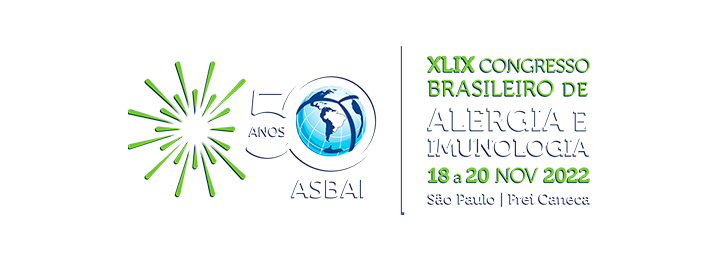Dados do Trabalho
Título
Dupilumab Treatment Normalizes Skin Barrier Function and Improves Clinical Outcomes in Patients With Atopic Dermatitis
Resumo
Rationale: Skin barrier dysfunction is well recognized in AD. Type 2 inflammation, mediated by interleukin 4 and interleukin-13, influences keratinization, integrity of tight junction, composition of lipids, microbiome diversity, filaggrin expression, and natural moisturizing factors.
Methods: The dupilumab skin BArrier function and LIpidomics STudy in Atopic Dermatitis (BALISTAD, [NCT04447417]) was a 16-week, open-label study in patients with AD aged 12–65 years. Patients with AD received dupilumab every 2 weeks (adults: 300mg; adolescents with baseline weight <60kg/≥60kg: 200/300mg). Serial assessment of transepidermal water loss (TEWL) before and after skin tape stripping (STS) was performed on lesional and non-lesional skin of 26 patients with AD treated with dupilumab and on the normal skin of 26 matched healthy volunteers. We also evaluated AD signs and symptoms using the Eczema Area and Severity Index (EASI) and SCORing Atopic Dermatitis (SCORAD) score.
Results: The median TEWL after 5 STS in AD lesions was significantly reduced from baseline starting at Week 2 (P<0.0001), and the reduction was sustained through Week 16 (P<0.0001). At Week 16, there were no statistically significant differences in the adjusted least squares mean TEWL in lesional and non-lesional skin in AD patients vs matched healthy volunteers (P=0.225 and P=0.1634, respectively). The mean (standard deviation [SD]) EASI improved from 31.2 (16.3) at baseline to 9.8 (6.5) at Week 16, and SCORAD score improved from 61.3 (17.7) at baseline to 24.0 (12.0), with significant improvement vs baseline at Week 2 (P<0.0001) and through Week 16 (P<0.0001). Overall safety was consistent with the known dupilumab safety profile.
Conclusions: Dupilumab treatment led to normalization of epidermal barrier function as seen from the significant reduction in TEWL in lesional skin of adults and adolescents with moderate-to-severe AD, which was associated with a significant improvement in signs and symptoms of AD.
Área
» Dermatite atópica e de contato
Autores
Robert Bissonnette, Martti Antila, Marco Ramirez-Gama, Shannon Garcia, Patricia Taylor, Amy Praestgaard, Noah A Levit, Ana B Rossi, Annie Zhang
